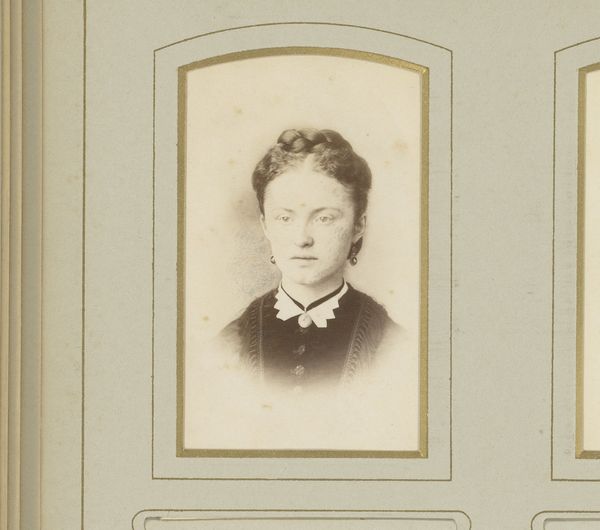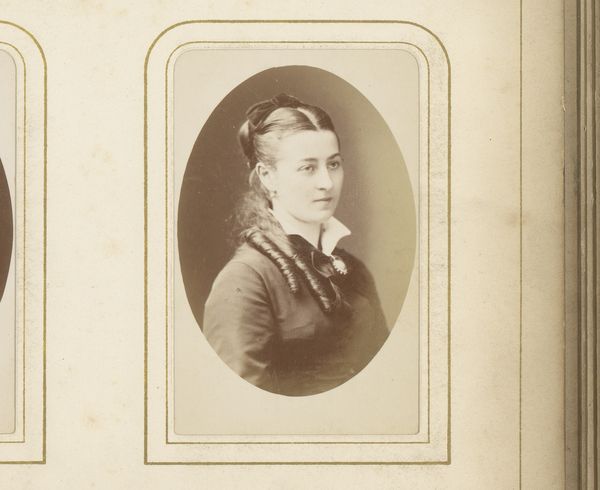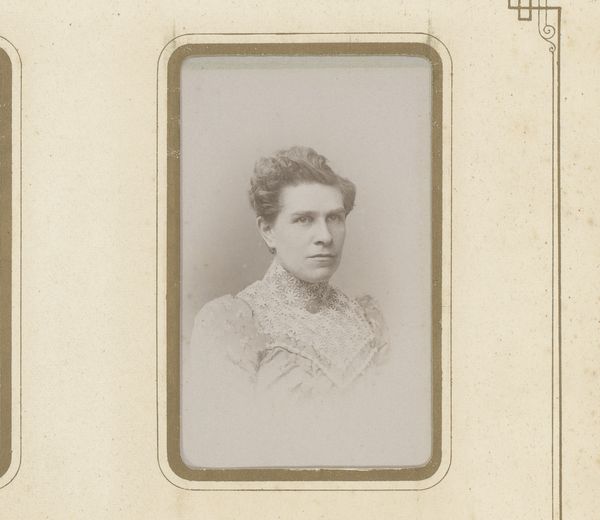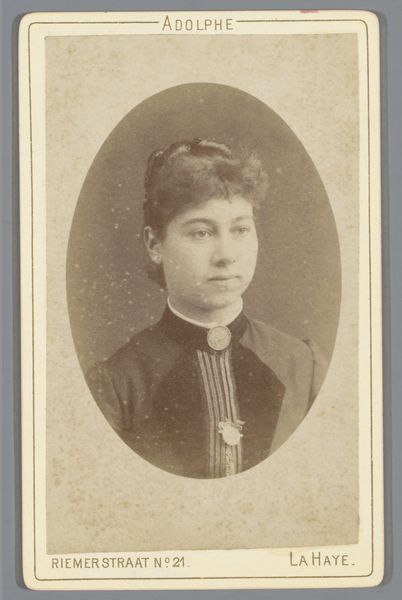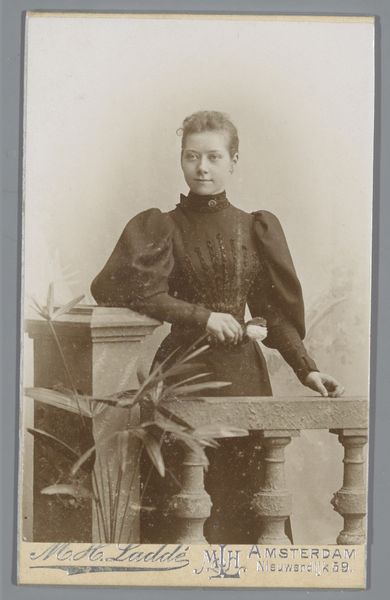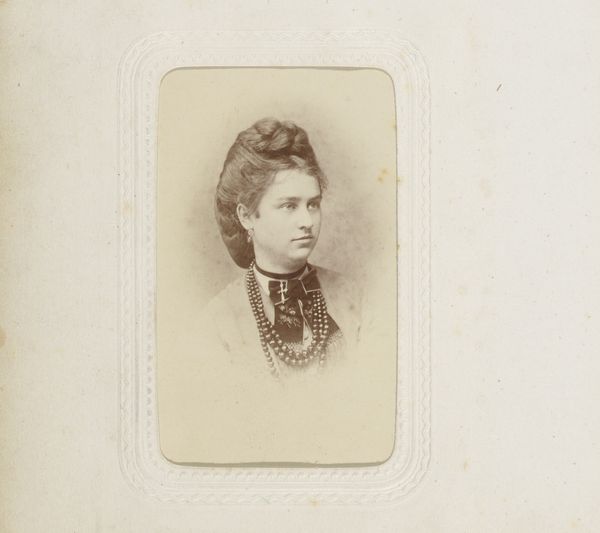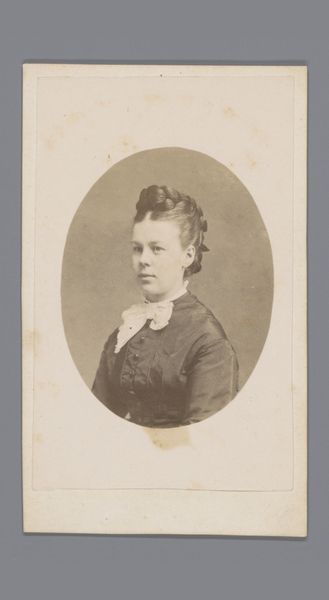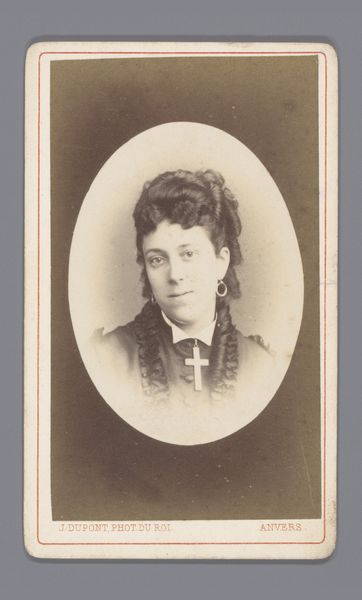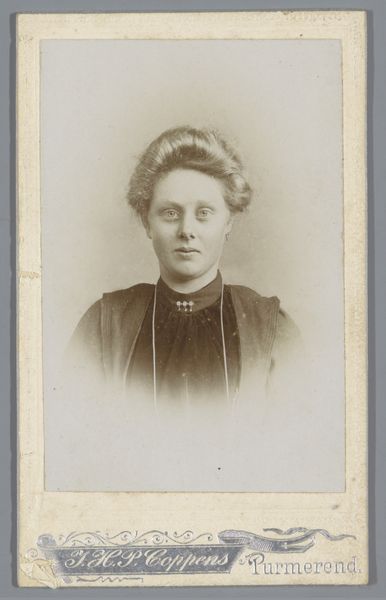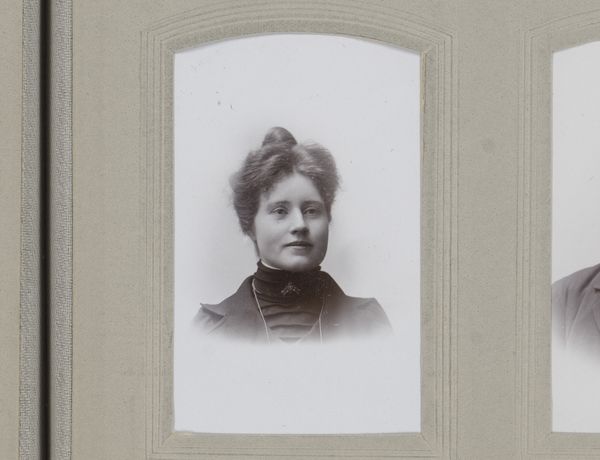
photography, gelatin-silver-print
#
portrait
#
16_19th-century
#
photography
#
historical photography
#
gelatin-silver-print
#
19th century
Dimensions: height 84 mm, width 54 mm
Copyright: Rijks Museum: Open Domain
Curator: This gelatin silver print, simply titled "Portret van een jonge vrouw," which translates to "Portrait of a Young Woman," was created sometime between 1860 and 1900. It’s part of the Rijksmuseum's collection. What’s your initial impression? Editor: Austere. Even melancholic, despite her delicate features and elaborate hairstyle. The tight framing emphasizes her closed-off demeanor. You almost wonder what the conditions were to make the woman present this pose. Curator: The material realities of 19th-century photography shaped the experience of portraiture. The gelatin silver printing process, requiring long exposure times, likely contributed to this sense of stillness. Consider also the photographer, Gösta Florman—who was he serving? Did the woman sit by her will? Was she properly compensated, perhaps? The gelatin silver print as a commodity… Editor: That's an important point, certainly. And these images, even in the age of mechanical reproduction, helped cement societal expectations regarding the representation of gender and class. The young woman's formal dress and elaborate hairstyle speaks to the upper middle-class status and aspirations, no? Curator: Precisely. The artistry lies in the control. There's an assumed choreography to such work, but also a lot that happens in the dark room itself. Even though a 'portrait' may evoke 'style', it's only but one step removed from being mass produced by a machine, an important part of thinking about how things of the time were experienced in that regard. Editor: And photography offered this new tool to build visibility for private citizens. Her slightly averted gaze creates a sense of interiority, inviting the viewer to contemplate her inner life. The framing of photographic images within family albums played an important role in solidifying family and social identities in this time. What did it mean to pose as such? Curator: An intentional fabrication in the pursuit of preserving one’s legacy, for sure. I find myself reflecting on the tangible qualities of this object. This is one example among many; to hold a physical gelatin silver print connects us, quite viscerally, to the materials, processes, and human labour involved in its creation. Editor: The role of public institutions like the Rijksmuseum then, become crucial in preserving and contextualizing objects such as these… It helps provide social value as time elapses. Curator: Yes. And perhaps reveal new contexts previously obscured through the passage of time, providing the image with additional material value to society itself! Editor: It certainly does.
Comments
No comments
Be the first to comment and join the conversation on the ultimate creative platform.

